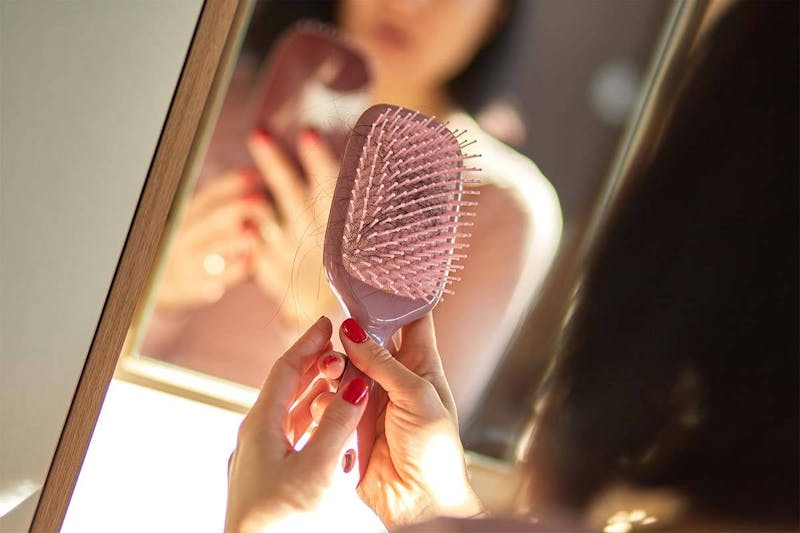Rooted in Results Let’s Get Growing
Hair loss is a symptom. We begin every journey by finding the cause, so your treatment plan isn’t just hopeful—it’s strategic, personalized, and proven to work.
Contact Our Team
Unlike male hair loss, female hair loss is vastly different and presents itself in different ways. It’s estimated that more than 50% of women in the United States will experience hair loss in their lifetime. Currently, 30 million American women of all ages suffer from some form of female hair loss. So how do you know that you are experiencing hair thinning, shedding, or hair loss?
Contrary to popular belief, if you are experiencing hair thinning or excessive shedding, you are experiencing hair loss. Hair thinning happens naturally over time, due to the miniaturization of hair strands. When this happens, the hair follicle stops producing hairs and those hair follicles are lost.
According to the American Academy of Dermatology Association, it’s typical for a person to lose 50 to 100 hairs per day. Any more than this normal amount of shedding should be evaluated by a medical professional.
Excessive shedding is when there is an accelerated amount of shedding in a short period of time. This is called telogen effluvium, which is the second most common form of hair loss, according to the American Hair Loss Association.
Telogen effluvium can present as diffuse hair loss, which is spread throughout the scalp, and increased hair shedding. Telogen effluvium can present typically around 2-4 months after a particular stressor on the body. In order to properly treat telogen effluvium, it’s first important to determine what the cause is, as both the initial stressor and hair loss must be treated.
The good news is that in most cases there is complete regrowth from shedding that occurs with telogen effluvium hair loss. This regrowth can occur on its own, but proper treatment can help to slow down the shedding and speed up the regrowth. Medi Tresse can help determine the cause as well as how to properly treat excessive shedding during the initial consultation.
When the hormonal scales are tipped and additional DHT (testosterone) is produced more than female hormones (estrogen and progesterone), a few things can happen when it comes to female hair loss. The hair follicle shrinks, and the growth phrase of the hair is shortened. Not only that, the time between shedding and the regrowth phase is lengthened.
Because of this, hair regrowth becomes thinner, fragile, and can fall out faster. Hair thinning can usually start around the parting line and sides of the scalp, and can gradually lead into thinning around the crown.
This type of hair loss is known as androgenic alopecia, or Female Pattern Hair Loss (FPHL), which is the most common type of hair loss experienced by women.
The first step of treating hair loss is to determine the cause and any identifying factors. It is essential that women start treatment as soon as they notice excessive hair shedding or thinning. By the time the scalp is visible through the hair, almost 50% of the density in that area has been lost.
The second step is to treat the hair loss to try and strengthen and rejuvenate your hair. At Medi Tresse, every patient must have an initial consultation to determine the root cause or causes to formulate a treatment plan, which is unique to each individual.
While there are a variety of terms and definitions to describe varying types of hair loss, all of the types fall under the umbrella of hair loss. And although hair thinning, excessive shedding, and hair loss can be confusing, finding the differences and possible causes are key to effective treatment.